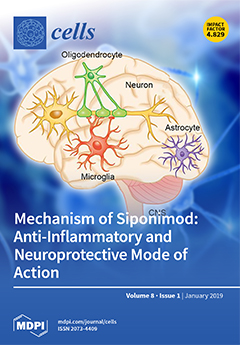Open AccessArticle
Transected Tendon Treated with a New Fibrin Sealant Alone or Associated with Adipose-Derived Stem Cells
by
Katleen Frauz, Luis Felipe R. Teodoro, Giane Daniela Carneiro, Fernanda Cristina da Veiga, Danilo Lopes Ferrucci, André Luis Bombeiro, Priscyla Waleska Simões, Lúcia Elvira Alvares, Alexandre Leite R. de Oliveira, Cristina Pontes Vicente, Rui Seabra Ferreira, Benedito Barraviera, Maria Esméria C. do Amaral, Marcelo Augusto M. Esquisatto, Benedicto de Campos Vidal, Edson Rosa Pimentel and Andrea Aparecida de Aro
Cited by 21 | Viewed by 5179
Abstract
Tissue engineering and cell-based therapy combine techniques that create biocompatible materials for cell survival, which can improve tendon repair. This study seeks to use a new fibrin sealant (FS) derived from the venom of
Crotalus durissus terrificus, a biodegradable three-dimensional scaffolding produced
[...] Read more.
Tissue engineering and cell-based therapy combine techniques that create biocompatible materials for cell survival, which can improve tendon repair. This study seeks to use a new fibrin sealant (FS) derived from the venom of
Crotalus durissus terrificus, a biodegradable three-dimensional scaffolding produced from animal components only, associated with adipose-derived stem cells (ASC) for application in tendons injuries, considered a common and serious orthopedic problem. Lewis rats had tendons distributed in five groups: normal (N), transected (T), transected and FS (FS) or ASC (ASC) or with FS and ASC (FS + ASC). The in vivo imaging showed higher quantification of transplanted PKH26-labeled ASC in tendons of FS + ASC compared to ASC on the 14th day after transection. A small number of Iba1 labeled macrophages carrying PKH26 signal, probably due to phagocytosis of dead ASC, were observed in tendons of transected groups. ASC up-regulated the
Tenomodulin gene expression in the transection region when compared to N, T and FS groups and the expression of
TIMP-2 and
Scleraxis genes in relation to the N group. FS group presented a greater organization of collagen fibers, followed by FS + ASC and ASC in comparison to N. Tendons from ASC group presented higher hydroxyproline concentration in relation to N and the transected tendons of T, FS and FS + ASC had a higher amount of collagen I and tenomodulin in comparison to N group. Although no marked differences were observed in the other biomechanical parameters, T group had higher value of maximum load compared to the groups ASC and FS + ASC. In conclusion, the FS kept constant the number of transplanted ASC in the transected region until the 14th day after injury. Our data suggest this FS to be a good scaffold for treatment during tendon repair because it was the most effective one regarding tendon organization recovering, followed by the FS treatment associated with ASC and finally by the transplanted ASC on the 21st day. Further investigations in long-term time points of the tendon repair are needed to analyze if the higher tissue organization found with the FS scaffold will improve the biomechanics of the tendons.
Full article
►▼
Show Figures






